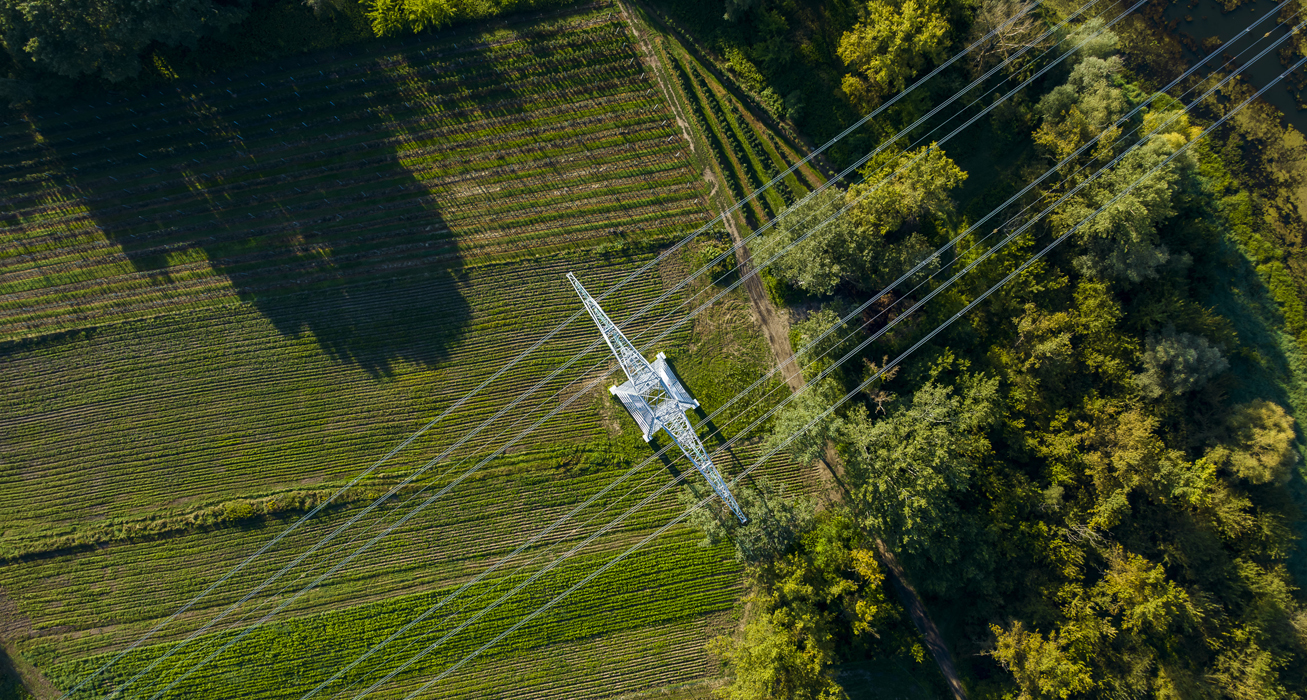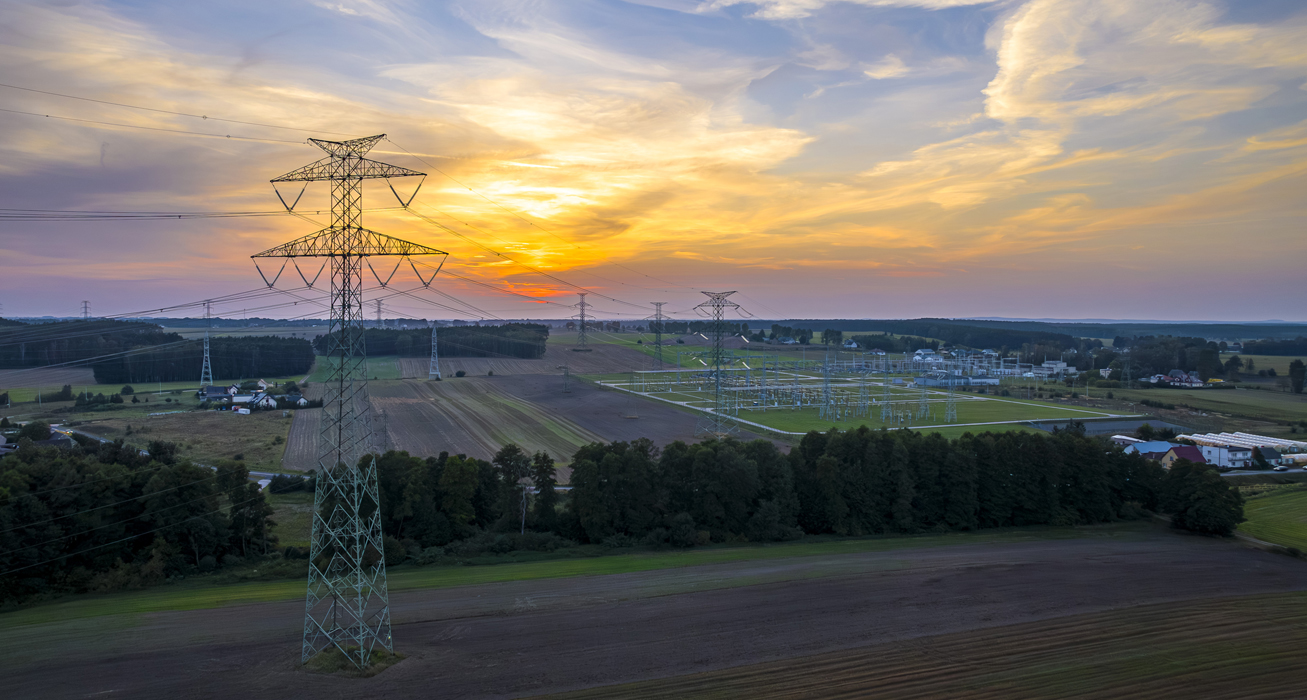Our grid infrastructure also includes a 450 kV submarine cable line of 127 km in length. The length of the entire line connecting Poland with Sweden is 254 km.
ECONOMIC AND MARKET IMPACTMaintenance of the transmission grid
PSE’s transmission grid consists of 16,133 km of extra-high voltage lines and 109 electrical substations. We maintain the condition and operating system of the grid to meet applicable requirements. The availability of our network assets largely determines the operational security of the whole system.
The condition of the transmission grid is confirmed by a high combined availability index (DYSU) for transmission facilities, which reached 99.87 percent in 2023, with the reference value ≥ 97.5.
The availability index for transmission facilities – DYSU – is calculated as the arithmetic mean of availability indices for 5 groups of transmission facilities including groups of lines and transformers installed at PSE substations.
The availability of each of those groups of facilities is calculated as the ratio of the actual operating time of transmission facilities (in hours) per year to the nominal number of hours per year.
The DYSU index is designed to monitor the readiness of transmission grid elements to provide the electricity transmission service and takes into account the availability of the following 5 groups of transmission facilities:
- Category L1 lines – international, radial and 400 kV lines with peak load of over 300 MW, and 220 kV lines with peak load of over 170 MW.
- Category L2 lines ─ other lines not mentioned in points 1 and 3.
- LB power unit output lines – lines evacuating power from power plants (connecting power plants with large power plant substations).
- Transformers in category S11 substations – transformers in substations with interconnections to the systems of other countries, power plant substations and 400 and 220 kV grid coupling substations.
- Transformers in category S22 substations – transformers in other substations not mentioned in point 4.
Monitoring the transmission grid
Monitoring of the operation and condition of the transmission grid
Maintaining grid assets requires the performance of ongoing monitoring of the operation and condition of various elements in the transmission grid. The following operation monitoring services were set up for this task within the Operations Department: Monitoring Centre (CN) in Konstancin-Jeziorna and five Regional Monitoring Centres (RCN) at the head offices of branch divisions in Warsaw, Radom, Katowice, Poznań and Bydgoszcz. The monitoring services model has a hierarchical structure. The Regional Monitoring Centres functionally report to the Monitoring Centre and are responsible for a designated area of PSE’s grid assets.
Fig. 1. Organisation of PSE operation monitoring services
Of the 109 electrical substations owned by PSE, 85 are controlled and monitored remotely, which allows switching operations to be performed from KDM/ODM/CN/RCN master centres, thus improving the operation of the NPS. Substations are gradually being brought up to the standard of remotely controlled and monitored facilities through upgrades. In substations where the remote control and monitoring function is limited from the level of master centres, all operating activities are carried out by ZES or substation staff.
Inventory management as an initiative in line with the idea of a circular economy
In the course of its operations, PSE strives to prevent the generation of a large amount of waste. An important role in this area is played by rational inventory management and thoughtful conduct after the dismantling of equipment. In situations where the disassembly involves equipment in working order, decisions are made to put the equipment in storage reserve for reuse in emergency or scheduled repairs. Where disassembly involves unserviceable equipment, consideration is given to testing the equipment and, consequently, carrying out an overhaul of the equipment. Thus, after an overhaul, the equipment is returned to the storage reserve as being in good working order and reusable.
In the case of equipment or materials that have become obsolete, PSE decides not to waive any repair. As a result, tendering procedures are held for the proper and responsible management of equipment and materials that eventually become waste.
Waste management at PSE is carried out by handing over waste to specialised companies that, within the scope of their activities, hold the relevant environmental permits for the final management of waste with a given code and demonstrate proven experience in this field. Waste recipients that do not hold the appropriate authorisations for the final management of hazardous waste are required by PSE to prove that the waste treatment process has been carried out and, as a result, that the hazardous waste has been transferred for final management. The process is closely monitored from the moment the device or material is considered waste until the final management of hazardous waste through the process of disposal or processing for reuse.
Some equipment includes recyclable materials. These include oil, steel, aluminium, copper and porcelain. These materials are recoverable after processing, so they can be reused in various industries.
The activities described are in line with the idea of a circular economy, which prioritises the reuse of equipment and materials, as well as carrying out repairs and overhauls for as long as it is possible and economically viable. This translates into an extension of the life cycle of equipment and materials, which in practice reduces waste generation to a minimum. As the life cycle of equipment and materials comes to an end, raw materials and waste, after appropriate processing, remain in the economy through the recycling process.
Key figures
main storage locations: 2 each in Radom and Bydgoszcz and 1 in each of: Warsaw, Katowice and Poznań,
storage depots throughout the country.

